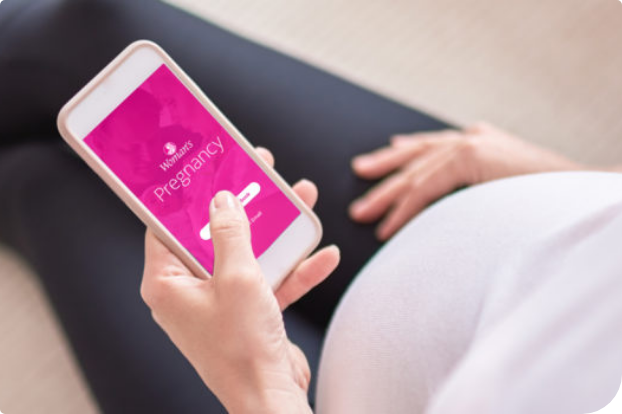Monitoring Your Blood Pressure
Monitoring your blood pressure is an important part of perinatal care.
High blood pressure (also called hypertension) during and after pregnancy can pose various risks for you and your baby. High blood pressure usually has no signs or symptoms, which is why it is important to attend all of your pre- and postnatal care visits. If it is determined that you are at risk, talk to your health care provider about the best ways to manage your blood pressure.
Reducing the Risk of Complications
Taking good care of yourself is the best way to take care of your baby. Here are a few tips:
- Keep your prenatal appointments.
- Take your blood pressure medications as prescribed.
- Monitor your blood pressure daily, following your doctor’s instructions.
- Don’t suffer in silence. If you don’t feel right, let your doctor know immediately.
- Eat a healthy diet. Speak with one of our nutritionists to create a diet that’s right for you.
- Know what to avoid. Avoid smoking, alcohol and illicit drugs. Talk to your health-care provider before taking over-the-counter medications.
High Blood Pressure and Pregnancy
Roughly 12-22% of women have some kind of high blood pressure during pregnancy.
Have questions and need assistance? Please contact Maureen Dempsey.
Women with gestational hypertension have high blood pressure that develops after 20 weeks of pregnancy. There is no excess protein in the urine or other signs of organ damage. Some women with gestational hypertension eventually develop preeclampsia.
Chronic hypertension is high blood pressure that was present before pregnancy or that occurs before 20 weeks of pregnancy. But because high blood pressure usually doesn’t have symptoms, it might be hard to determine when it began.
This condition occurs in women with chronic hypertension before pregnancy who develop worsening high blood pressure and protein in the urine or other blood pressure related complications during pregnancy.
Preeclampsia occurs when hypertension develops after 20 weeks of pregnancy and is associated with signs of damage to other organ systems, including the kidneys, liver, blood or brain. Untreated preeclampsia can lead to serious – even fatal –complications for mother and baby, including development of seizures (eclampsia). Symptoms of preeclampsia include severe headaches, seeing spots and/or blurry vision, pain in the top right side of the abdomen, and swelling in the hands or face. Report these symptoms to your doctor immediately.
Lingering hypertension is common among women who have severe preeclampsia during their pregnancies. Some women are diagnosed with preeclampsia after giving birth. Most cases of postpartum preeclampsia develop within 48 hours of childbirth. However, postpartum preeclampsia sometimes develops up to six weeks after childbirth. Symptoms of postpartum preeclampsia should be reported to your doctor immediately. These symptoms are the same as the symptoms for preeclampsia that occurs during pregnancy and are listed above.
Deep Vein Thrombosis (Blood Clot)
A deep vein thrombosis (DVT) is a blood clot in the deep veins, usually in the legs.
You have a higher risk of a DVT during pregnancy and the first six weeks after giving birth. DVTs can form when blood flow is slower than normal, when blood vessels are damaged or after childbirth, when the blood clots more easily than normal.
A DVT can be life-threatening if it travels to the lungs. This is called a pulmonary embolism.
Woman’s Pregnancy App
The only personalized pregnancy, labor and newborn app you’ll need, from one of the largest birthing hospitals! Track your progress week-by- week, keep a diary with photos, log your contractions, record feeding and diaper changes during your baby’s first weeks.
